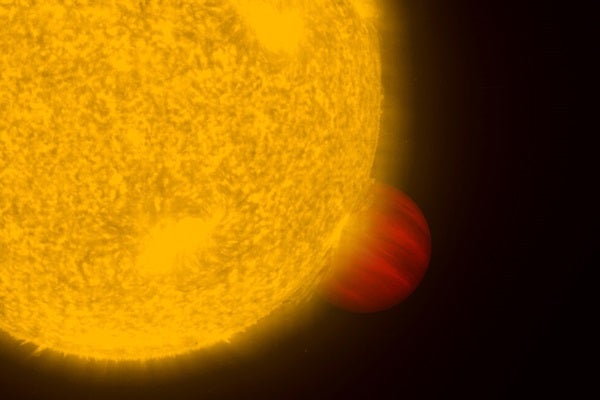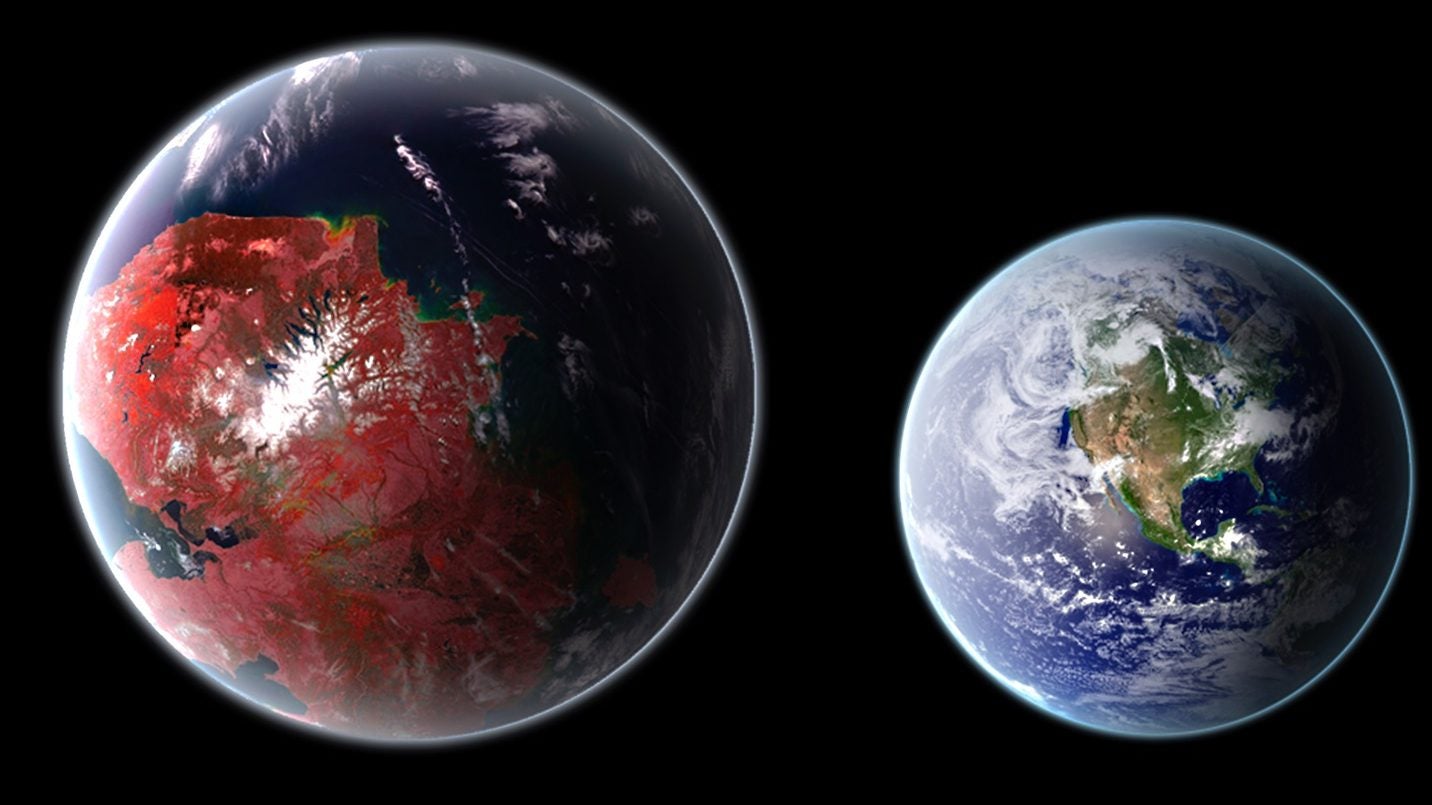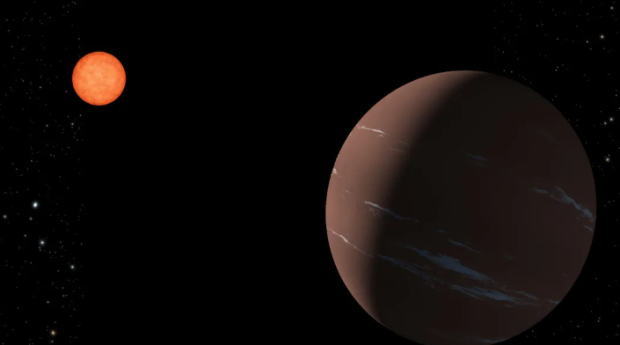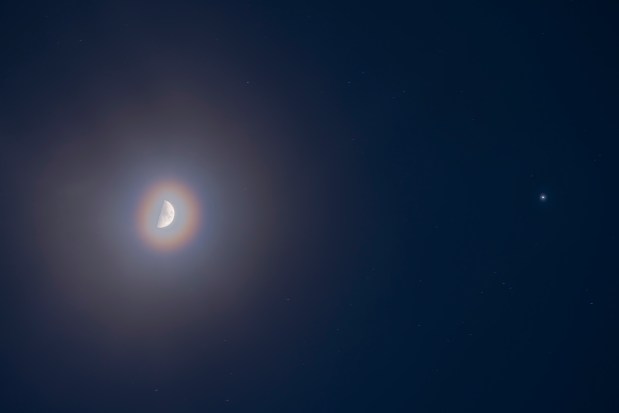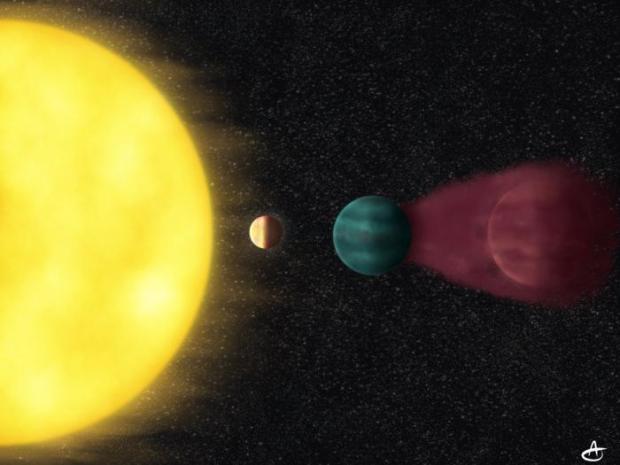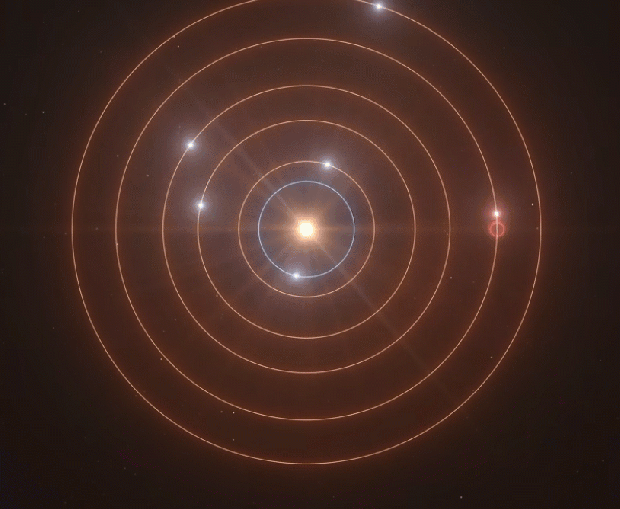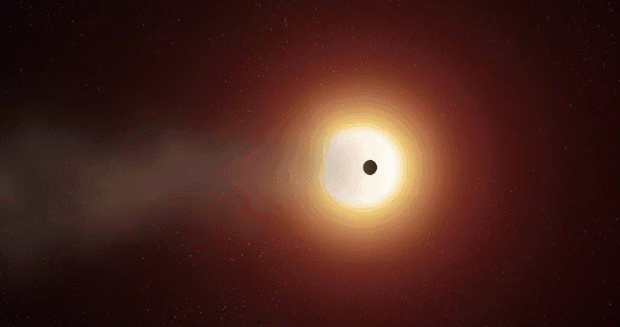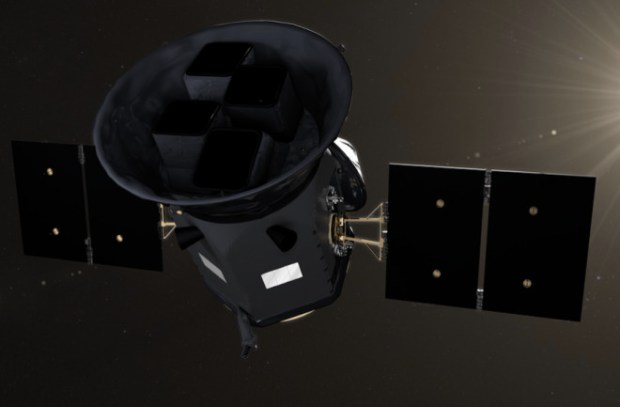Since the early 1990s, scientists have found almost 1,000 planets in orbit around other stars. These so-called exoplanets are mostly much larger than Earth, and many are much closer to their stars than we are to the Sun, leading them to be described as “hot Jupiters.” In the new work, the team studied the exoplanet HD 189733b, a world that orbits its star every 2.2 days and is heated to a temperature of more than 1800° Fahrenheit (1000° Celsius).
Astronomers usually find exoplanets by measuring the gravitational influence of the planet on the star, which acts to pull the star around in a small orbit, at velocities of a few kilometers per hour. This movement causes a small shift in the lines of the stellar spectrum (known as the Doppler shift), which move back and forth with the wobble of the star.
The Leiden University-led team have flipped the technique on its head by measuring the gravitational influence of the star on the planet, which is much larger, hurling the planet around its orbit at some 250,000 mph (400,000 km/h). They measured this by tracing the Doppler shift of the water lines in the exoplanet’s spectrum as it orbited the star. Despite the much larger velocity of the planet, it is nearly a thousand times fainter than the star, which makes detecting it difficult. The scientists were able to detect the spectral lines of water in the exoplanet atmosphere by using the CRyogenic high-resolution InfraRed Echelle Spectrograph (CRIRES) instrument mounted on the VLT.
Using the same technique, scientists also were recently able to find the simple molecule carbon monoxide (CO) in the atmosphere of the same planet, but this is the first time it has been used to identify a more complex molecule like water (H2O). The detection means that the door is now open for a much more detailed census of the chemical makeup of many other exoplanet atmospheres, including molecules such as methane (CH4) and carbon dioxide (CO2), which are key ingredients for unraveling a planet’s formation history. It also paves the way for future observations with the coming generation of large telescopes like the European Extremely Large Telescope (E-ELT) that will begin operations from its site in Chile in 2020. These instruments will be able to use the technique to hunt for potential signs of life, such as oxygen, in the atmospheres of planets similar to the Earth.
“We knew our technique worked for simple molecules at shorter wavelengths, but in order to hunt for water, we had to go to longer wavelengths where the Earth’s atmosphere really starts to obstruct the signals we are looking for, so we weren’t sure we would find anything,” Birkby said. “Of course, we were delighted when we saw the signal jump out at us. It means we can do much more with this technique.
“In the next decade, our work will help astronomers refine their search for Earth-like planets — and even life — in orbit around other stars. It’s incredibly exciting to think that in my lifetime we will reach a day when we can point up to a star and say with confidence that it has a world just like our own.”

